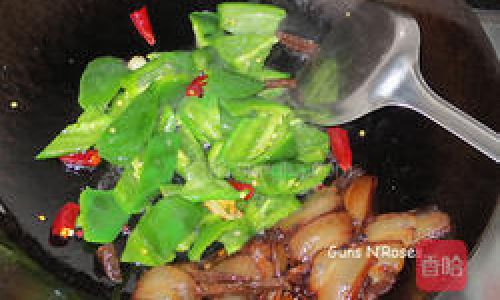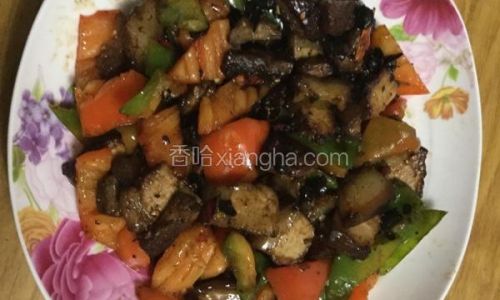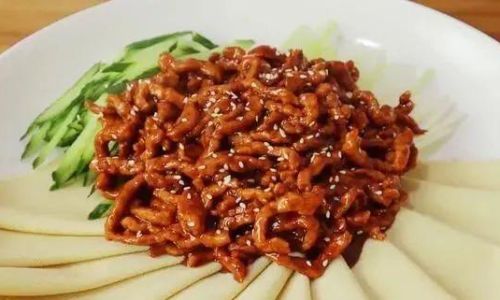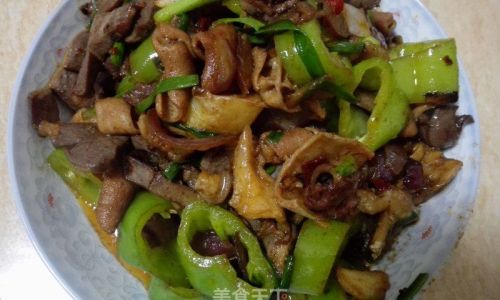Table of content
Stir-fried spicy pork, a beloved dish in many Asian cuisines, is a symphony of textures and flavors that tantalizes the taste buds. This versatile recipe, often referred to as “spicy pork stir-fry” or “twice-cooked pork” in some regions, combines tender meat, aromatic spices, and vibrant vegetables into a single harmonious plate. Whether you’re a seasoned home cook or a curious novice, mastering this dish requires attention to detail, precision in technique, and an understanding of how ingredients interact under high heat. In this guide, we’ll explore the step-by-step process of creating restaurant-quality stir-fried spicy pork, from selecting the right cut of meat to achieving the perfect balance of heat, sweetness, and umami.

The Foundation: Choosing the Right Ingredients
The Star of the Show: Pork
The success of your stir-fry begins with selecting the ideal cut of pork. While many recipes call for pork belly due to its rich marbling and tender texture, alternatives like pork shoulder (also known as “butt”) or tenderloin can work well for leaner preparations. Pork belly, however, is prized for its ability to render fat during cooking, creating a caramelized exterior while remaining juicy inside. When shopping, look for meat with even fat distribution and a fresh, pink hue. Avoid cuts with excessive gristle or discoloration.
Aromatics and Spices: The Flavor Builders
The backbone of any stir-fry lies in its aromatics—garlic, ginger, and scallions—which form the flavor base. For spicy pork, dried chili peppers, Sichuan peppercorns, and chili bean paste (such as doubanjiang) add layers of heat and complexity. Fermented black beans or a splash of black vinegar can introduce a subtle tanginess, while a touch of sugar balances the dish. Fresh ingredients like bell peppers, onions, or carrots may be added for color and crunch, but the true magic resides in the spice blend.
Sauces and Seasonings: Elevating the Taste
A well-balanced sauce is crucial. Soy sauce, oyster sauce, and rice wine (or Shaoxing wine) provide depth, while a pinch of white pepper or five-spice powder adds warmth. For those who prefer a glossy finish, a small amount of cornstarch mixed with water (a “slurry”) can thicken the sauce without making it gluey.
Preparation: The Key to Efficiency and Flavor
Slicing the Pork
Cutting the pork correctly ensures even cooking. For pork belly, slice the meat into thin, bite-sized strips against the grain. This technique shortens the muscle fibers, resulting in tender pieces that melt in your mouth. If using a leaner cut like tenderloin, consider marinating the meat briefly in a mixture of soy sauce, rice wine, and cornstarch to tenderize it.
Prepping the Aromatics
Mince garlic and ginger finely to release their oils during cooking. Slice scallions into 2-inch segments, separating the white and green parts (the whites are added earlier for flavor, while the greens are used as a garnish). For dried chilies, remove the stems and seeds (if less heat is desired) and snip them into small pieces.
Mixing the Sauce
Combine soy sauce, oyster sauce, sugar, rice wine, and a splash of black vinegar in a bowl. Stir until the sugar dissolves. Having the sauce pre-mixed streamlines the cooking process, preventing overcooking of the ingredients.
The Cooking Process: Mastering the Stir-Fry
Heating the Wok
A carbon-steel wok is ideal for stir-frying due to its ability to retain and distribute heat evenly. Place the wok over high heat and add a neutral oil with a high smoke point, such as peanut or vegetable oil. Allow the oil to shimmer but not smoke.

Rendering the Pork
Add the pork slices to the hot wok in a single layer, ensuring they don’t overlap. Let them sear undisturbed for 1–2 minutes until they caramelize and release their fat. Stir-fry for another 2–3 minutes until the meat is cooked through but still tender. Overcrowding the wok will steam the meat instead of searing it, so work in batches if necessary. Remove the pork and set it aside.
Cooking the Aromatics
In the same wok, add a touch more oil if needed. Toss in the dried chilies, Sichuan peppercorns, minced garlic, and ginger. Stir-fry for 30 seconds until fragrant, being careful not to burn the garlic. Burnt garlic imparts a bitter taste, so keep the heat high but monitor closely.
Adding Vegetables (Optional)
If using vegetables like bell peppers or onions, add them now. Stir-fry for 2–3 minutes until slightly softened but still crisp. The vegetables should retain their vibrant color and texture.
Combining Ingredients
Return the cooked pork to the wok. Pour the pre-mixed sauce over the ingredients and toss to coat evenly. Allow the sauce to bubble and reduce slightly for 1–2 minutes. If using a cornstarch slurry, stir it in now and cook until the sauce thickens.
Final Touches
Add the green parts of the scallions and a drizzle of sesame oil for fragrance. Toss once more and remove from heat immediately to prevent overcooking.
Expert Tips for Perfect Stir-Fried Spicy Pork
-
High Heat is Non-Negotiable: Stir-frying requires intense heat to seal in flavors and create a smoky char (known as wok hei in Cantonese cuisine). Avoid using low heat, as this will steam the ingredients instead of searing them.
-
Don’t Overcrowd the Wok: Cooking in batches ensures each piece of meat and vegetable comes into contact with the hot wok surface, promoting even browning.

-
Adjust Spice Levels to Taste: For milder heat, reduce the number of dried chilies or remove the seeds. For extra fire, add a pinch of chili flakes or a spoonful of hot sauce.
-
Marinate Lean Cuts: If using pork tenderloin or loin, marinate it for 15–30 minutes in a mixture of soy sauce, cornstarch, and baking soda to tenderize the meat.
-
Experiment with Add-Ins: Customize the dish with ingredients like bamboo shoots, water chestnuts, or mushrooms for added texture.
Serving Suggestions
Stir-fried spicy pork pairs beautifully with steamed jasmine rice, which soaks up the flavorful sauce. For a heartier meal, serve it over egg noodles or wrapped in lettuce leaves for a fresh crunch. A side of pickled vegetables or cucumber slices provides a cooling contrast to the dish’s heat.
Variations to Explore
- Vegetarian Twist: Substitute the pork with crispy fried tofu or mushrooms. Use vegetarian oyster sauce and double the vegetables for a plant-based feast.
- Sweet and Spicy Version: Add a spoonful of honey or brown sugar to the sauce for a caramelized glaze.
- Kung Pao-Inspired: Include peanuts or cashews during the final stir for a nutty crunch.
Troubleshooting Common Issues
- Soggy Meat: Ensure the wok is hot enough before adding the pork. Overcrowding the pan causes steaming, not searing.
- Bland Flavor: Increase the amount of chili bean paste or soy sauce, and don’t skip the fermented ingredients like black beans.
- Burnt Aromatics: Add garlic and ginger after the meat is seared to prevent scorching.
The Cultural Significance of Stir-Fried Spicy Pork
In many Asian cultures, stir-frying is more than a cooking technique—it’s a reflection of history and tradition. Dishes like spicy pork stir-fry often originated as peasant food, utilizing affordable cuts of meat and readily available spices. Over time, they evolved into culinary icons, cherished for their ability to transform simple ingredients into a feast. Today, this dish is enjoyed in homes and restaurants worldwide, a testament to its adaptability and universal appeal.
Conclusion
Mastering stir-fried spicy pork is a journey that rewards patience and practice. By understanding the interplay of ingredients, mastering wok techniques, and embracing experimentation, you can elevate this humble dish into a culinary masterpiece. Whether you prefer it blazing hot or mildly spiced, the key lies in balancing flavors, textures, and aromas. So grab your wok, sharpen your knife, and let the sizzle of the pan guide you to stir-fry perfection. Your taste buds—and dinner guests—will thank you.





0 comments